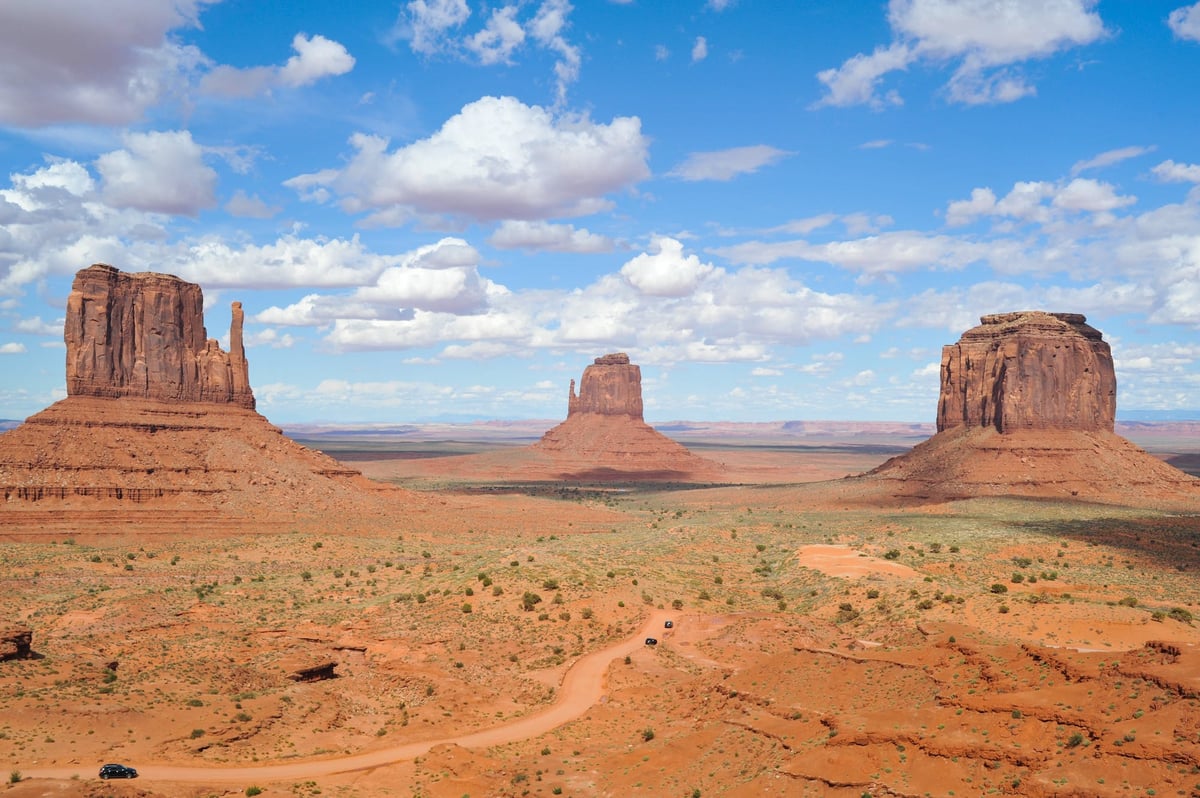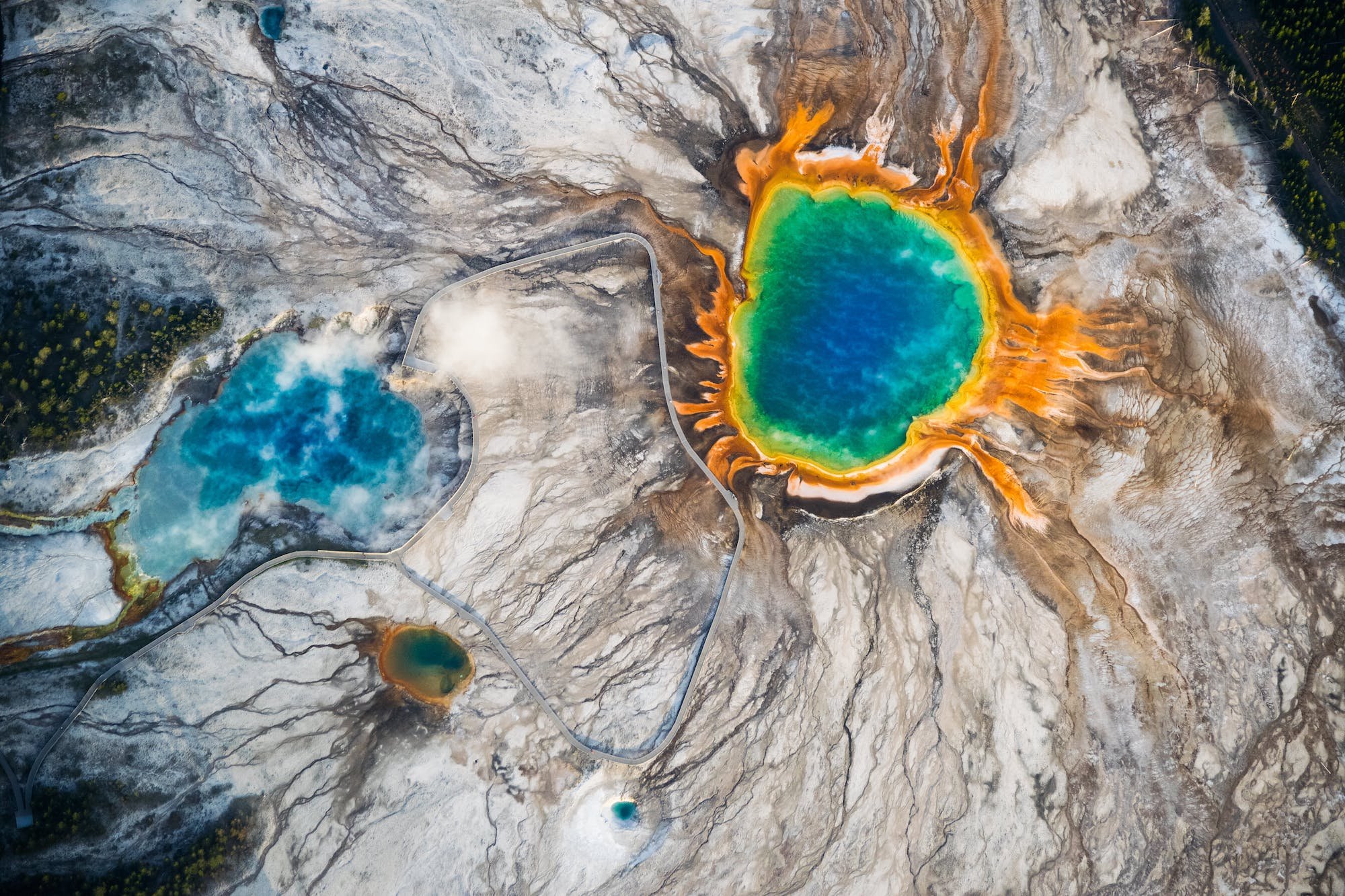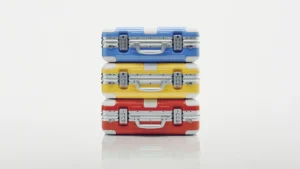This article is part of a series celebrating Boss Hunting’s favourite corners of the United States. Click here to see more.
From the rugged badlands of New Mexico and Hawaii’s active volcanic zones to craggy Alaskan ice caves and biologically diverse national parks, the USA is the ultimate playground for nature lovers seeking both heart-pounding adventure and life-affirming restoration, in equal measure.
The 50 states host some of the world’s most spectacular and transformative natural wonders, so it’s no surprise ecotourism is big business for the USA each year. Carve out a few weeks to dip into the country’s enviable collection of landscapes and you might find yourself tracking dinosaur fossils in Colorado, days before burrowing into an ice cave in Montana or skydiving over Yosemite National Park with a bird’s eye of California’s fabled Sierra Nevada Mountains.
These are the kinds of natural wonders that ultimately make travel worth your time and money. Not only is exploring the USA essential for those seeking a deeper connection to the world, but it’s these blessed hotbeds of earthly riches that will make your trip more about personal growth and stepping outside your comfort zone than the typical holiday indulgences.
Below you’ll find a beginner’s guide to the USA’s greatest treasures. The worldly (and often otherworldly) landscapes you’ll never forget, take you from the tropical wetlands of Florida to the rocky epic rock formations of Utah and beyond. Sink into these majestic wonders and you’re guaranteed the trip of a lifetime.
But to do that, you’ll first need to know five states to have on your radar, and why.
Utah

In the west, Utah’s natural spoils are so epic that it’s almost unfair how much this pocket of the USA has sketched for itself. The attractions are endless, from Bryce Canyon to Monument Valley, making the state a no-brainer for those seeking the timeless charms of the Old West.
The Beehive State’s southern desert landscapes and western towns are best experienced on a road trip so hop into a drop-top or hire a hog before starting your trip in the capital, Salt Lake City, located in the north-central region of the state. Utah is more manageable than somewhere like California however visiting all of the state’s five national parks, comfortably, will require more than a week of your trip.
Moab is almost a four-hour drive southeast of Salt Lake City. Base yourself in this northeastern enclave before exploring the massive Arches National Park. Hike the paved park roads and try to spot more than 2,000 impressive rock arches including the 16-metre high Delicate Arch and the maze-like passages of Fiery Furnace.
The rugged Canyonlands National Park nearby deserves at least a day, as does Capitol Reef National Park which is just over a two-hour drive away. But dedicate most of your time to Bryce Canyon National Park, with its red rocks, pink cliffs and alien formations that make it seem like you’re on another planet. Wrap the week at the indescribable Zion National Park and search for the Emerald Pools with their various waterfalls and hanging garden.
Alaska

Alaska, in the northeastern corner of North America, is more diverse than most would expect, with the best example being the 6.1 million acres of wilderness found in Denali National Park, roughly 4 hour’s drive north of Anchorage. Alaska Airlines flies direct from LAX to Anchorage, a journey that takes a tad under 6 hours.
This pocket in south-central Alaska is all lush forestry, vast glaciers, and a wide array of wildlife. If the massive icefields in this park aren’t enough, head on over to Juneau, the gateway to the striking Mendenhall Ice Caves which glow arctic blue and constantly change, open, close and move as the glacier ages.
The Mendenhall Glacier is part of the 16.7 million acre Tongass National Forest, with plenty of other things to see and do including a bucket list hike along Harbor Mountain Trail at the famously wild Inside Passage.
Hawaii

The crusty desert landscapes of Utah and the icy tundras of Alaska feel worlds away from Hawaii, and they are given the 6-hour flight from the USA’s west coast. Roughly 10 hours from the Australian east coast, the islands present the perfect stop for travellers en route to the USA seeking pristine beaches, breathtaking scenery, active volcanoes, and some of the best hiking on the planet.
At 16 kilometres wide, Waimea Canyon is one of Hawaii’s most masterful features, where centuries of volcanic activity, rainfall, and erosion have shaped these impressive red-earth craters and cliffs. Nothing beats seeing this creation from above so a helicopter tour is a must.
If scorched earth is what you came for then head through to Hawaii Volcanoes National Park, where active mountains Maunaloa and Kilauea are located. Again, a helicopter would give you the best vantage of all the water, land and lava below, but there’s plenty to see on the ground between all the steam vents, underground lava tubes, and hiking trails. You’ll also want to drive Chain of Craters Road, a world-famous track that winds through the park up until the point where it’s cut off by lava flow.
Hawaii has plenty of other sights, like the majestic face of the Koʻolau Range on Oʻahu and the dramatic sea cliffs of Kaua’is Napali Coast. But if you’re limited on time, head straight for Le’ahi Head crater. Otherwise known as Diamond Head, this perfectly formed parcel is a renowned hiking destination with panoramic views of Waikiki and O’ahu.
Wyoming

Wyoming, the USA’s west, is one of the most beautiful places in the world. There’s little doubt about that once you’re hiking through Yellowstone National Park or admiring the snow-covered peaks of the Grand Teton National Park. Of all the USA’s 424 national parks, which span every state and territory in the country, these two are some of the most biodiverse and exciting.
Yellowstone actually became the world’s first national park in 1872, and the absolute pride Americans have for this incredibly diverse part of the world is infectious. Don’t plan on seeing it all unless you want to dedicate your entire trip to the park. After all, Yellowstone is over two million acres large, and spans three states (95% in Wyoming with Montana and Idaho sharing the remainder), and outsizes entire states like Dakota and Rhode Island.
Tick Old Faithful and Mammoth Hot Springs off your bucket list first and foremost, but Yellowstone is staggering in the amount it has to offer. Hike your way to Grand Prismatic Spring for stunning scenery and then see if you can scramble your way to the Grand Canyon of Yellowstone in time for sunset.
The pristine Grand Teton National Park may not be as well known as Yellowstone but this 310,000-acre pocket of the USA is just as rewarding as far as natural wonders go. Boat through the crystal-clear alpine lakes and hike the emerald forests, all while keeping the imposing peaks of the Grand Teton Mountain Range in view.
California

The craggy coastline of Big Sur, along the USA’s scenic west coast, is one of the world’s most famous drives for a reason. With giant redwoods on one side and breaching whales on the other, it’s hard not to imagine this as the peak of outdoor living. But it gets better; it always does in California.
Yosemite National Park is just over a four-hour drive from San Francisco and offers plenty to do like hiking the great Mariposa Grove with its high density of Giant Sequoia trees. Search for the famous Yosemite Falls if you want to keep things grounded, but those who want to see Yosemite in all its glory should hit up Skydive Yosemite where anyone can experience the park from 14,000 feet.
Keep things in the north and make the short drive to Mammoth Mountain for some of the best ski terrain in the state, then back that up with a visit to Lake Tahoe where the horseshoe-shaped inlet of Emerald Bay lay with its glacier-carved granite and spectacular natural beauty.
The lowest and driest part of the famously hot Death Valley is located in Southeastern California so no tour of the state would be complete without making the effort to see the badlands. The lowest point in North America is also its most dramatic so take some time to explore the mountainous sand dunes, salt flats, and colourful sandstone canyons.
Other Natural Wonders In The USA

Above you’ll find five states you need on your radar for a comprehensive journey through the USA’s natural wonders, yet there is so much more you need to be across.
Hop on down to Florida, in the USA’s southeastern corner, and take an airboat through the 1.5 million acres of tropical wetlands in the state’s far south. Hike the breathtaking Bisti Badlands of New Mexico and follow that up with a visit to the subterranean complex of Carlsbad Caverns. Shout down the Grand Canyon’s South Rim after a helicopter ride in Arizona. Dig for fossils at Dinosaur Ridge in Colorado before seeing how nature formed the world’s most acoustically perfect live music venue by seeing a show at Red Rocks Amphitheatre.

Track the peaks and valleys of Glacier National Park in Montana. And by the time you’ve done all that, maybe you’ll be prepared for the absolute shock that comes with seeing Niagara Falls in real life up in Buffalo, New York.
As you can see, there are so many significant natural wonders in the United States that it’d take a lifetime to tick them off your bucket list. Hopefully, this beginner’s guide to the USA’s many riches will help you figure out where to stay and which states you need to be paying the most attention to if you want to get through as much of earth’s treasures as possible and have a lot of fun doing so.
This article is sponsored by VisitTheUSA.com.au and is part of a series celebrating Boss Hunting’s favourite corners of the United States. Click here to see more, and thank you for supporting the brands that support Boss Hunting.












